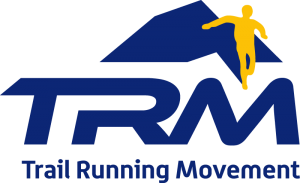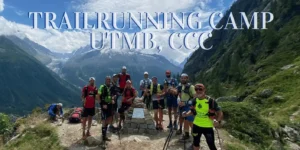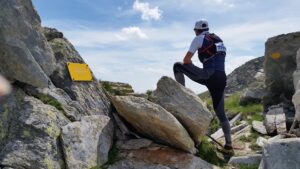
WHY SHOULD YOU USE TRAIL RUNNING POLES
Trail running poles have several benefits and by now even the top runners, who make extensive use of them in competitions of different lengths and types, have understood this. However, the use of poles in Trail Running requires time not only to learn the correct uphill, downhill or running technique but also to train the muscles of the arms, shoulders, abdominals and backs engaged in the effort.
It takes 2 to 3 months of targeted exercises to get a good result and be ready to face the high mountain trail running races of the summer months.
You may be now wondering, what are the main advantages of using it?
Let’s see them together in detail, distinguishing, especially between the ascent and descent phases. In flact or slightly undulated sections, the main benefits are in very long races, when running becomes difficult and your stride less efficient!
On steep climbs, trail running poles help you to:
- optimize movement as they allow a better distribution of muscle work without increasing your heart rate
- maintain a steady pace
- reduce the feeling of fatigue. In particular the quadriceps and calves will be relieved from much of their strenuous work
- make your lower back work in a more ergonomic position and give you extra support in relieving the weight of the backpack
- ensure that, at the end of the climb, you can easily switch to running without being affected on the descent.
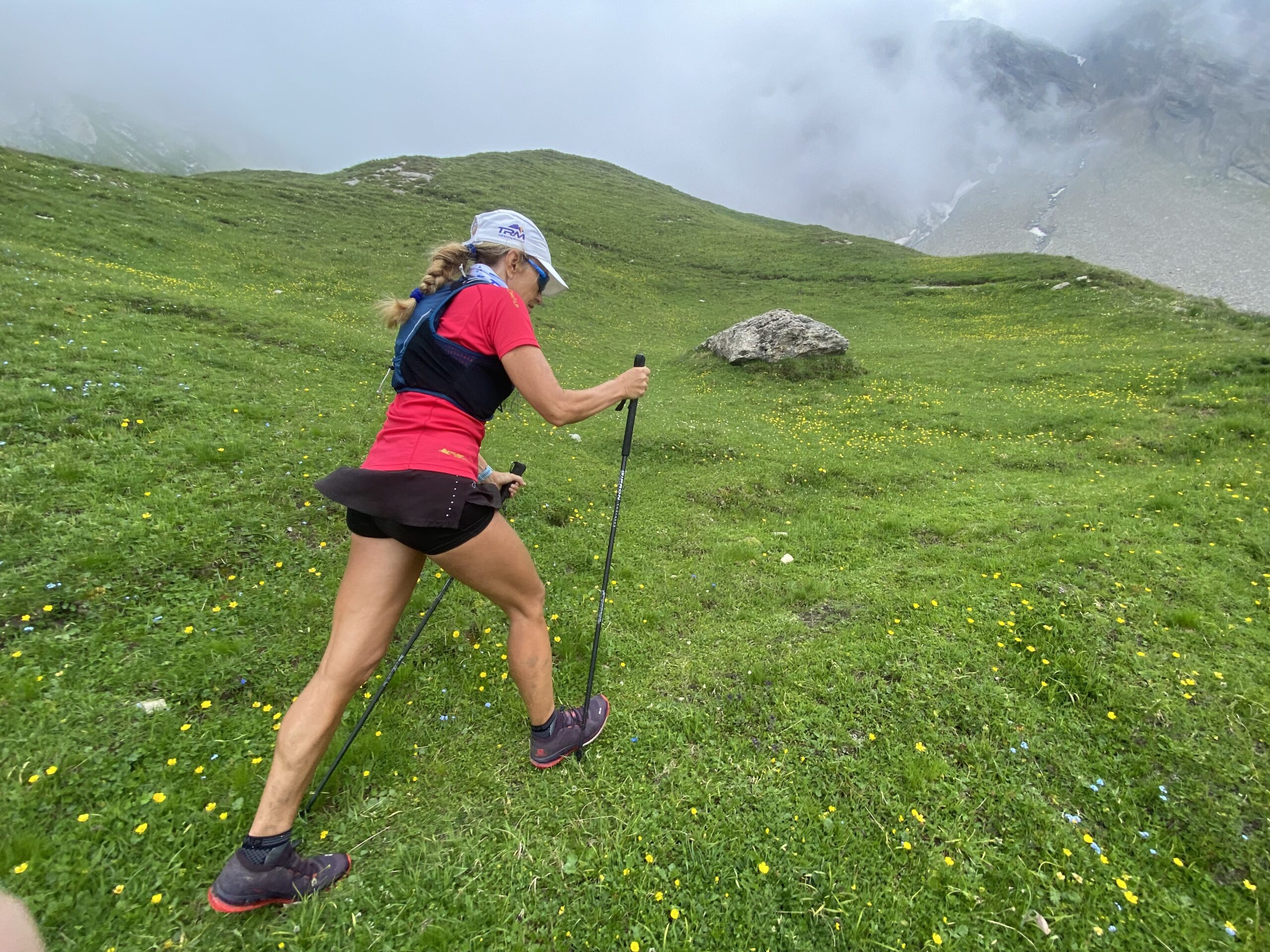
On the descents the poles:
- perform an important function of support stabilizers, especially on difficult terrain, reducing the risk of falls
- help to reducing the weight of the body and of the backpack, relieving the load on the ankle joints
- they favor the maintenance of concentration on the execution of the athletic gesture, especially when you are tired or in the night sections of a competition.
Which sticks to choose? The telescopic ones have 3 indisputable advantages: 1) they fold up easily and you can put them away when you don’t need them 2) if you travel by plane, you can store them in the luggage to be sent 3) they are light and folded can measure around 40cm.
What kind of sessions to perform?
Here are some examples of training:
- long ascent from 3K-5Km with gradient > 20% and descent on the equivalent track. Carry out a 20′ slow warm-up and then face the climb using the poles in alternating mode with an intense rhythm. During the descent, practice using the poles correctly
- 2K climb with a gradient around 30%. Carry out a 20′ slow warm-up and then tackle the climb using both poles at the same time, placing them in front of you and modulating the effort. In the descent phase walk fast
- 20′ Fartlek uphill on a climb with a gradient of around 8%-10%. Carry out a 20′ slow warm-up and then face the climb running and using the poles in alternating mode with an intense pace: 20′-30′ alternating 30″ Strong/1’30” jogging continuing uphill. In the descent phase, alternate running-walking smoothly
- 3k-4k on a flat path. Carry out a 20′ warm-up and then tackle the 3K-4K on the flat by running and using the poles in alternating mode. Start by running slowly and concentrating on the athletic gesture, once you become more familiar, increase the pace
WOULD YOU LIKE to learn how to use trail running poles at the TOP like a Pro? Join us at TRM Camp Mont Blanc, find out more here: Trail Camp Mont Blanc – 2 or 4 days
DO YOU NEED some more advice? Write to our Coaches info@trailrunningmovement.com
gipron, running with poles, trail running poles, trail running poles, trail running poles gipron, train with poles



